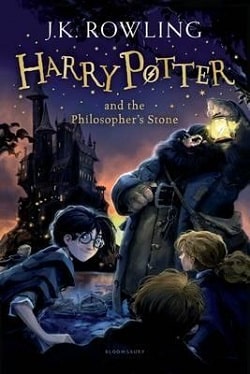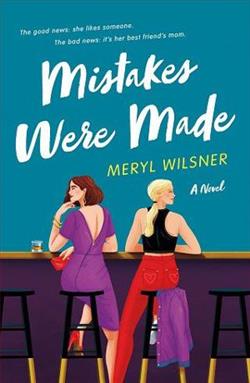CHRISTMAS DAY
Christmas Day for those who are incarcerated can be summed up in one word: dreadful. I have learned during the last 159 days as a prisoner how perverse reality is.
I go to work today, as every other day, and am grateful for something to do. At the seven-thirty surgery, only six prisoners report for sick parade; you have to be really ill to get up at 7.30 am on Christmas morning and troop across to the hospital when the temperature on the east coast is minus two degrees.
At eight-fifteen I go to breakfast, and even though it’s eggs, bacon and sausage served by the officers (Mr Hocking, Mr Camplin, Mr Baker and Mr Gough), only around forty of the two hundred inmates bother to turn up.
On returning to the hospital, Linda and I unload bags of food from her car so I can hold a tea party for my friends this afternoon. She also gives me a present, which is wrapped in Christmas paper. I open it very slowly, trying to anticipate what it might be. Inside a neat little box is a china mug, with a black cat grinning at me. Now I have my own mug, and will no longer have to decide between a Campbell’s Soup giveaway and a plain white object with a chip when I have my morning Bovril.
10.00 am
Linda leaves me in charge of the hospital while she attends the governor’s Christmas party. Frankly, if over half the prisoners weren’t still in bed asleep, I could arrange for them all to abscond. When the tabloids claim I have privileges that the other prisoners do not have, in one respect they are right; I am lucky to be able to carry on with the job I do on the outside. While everyone else tries to kill time, I settle down to write for a couple of hours.
> 12 noon
Lunch is excellent, and once again served by the officers, and shared with a half dozen old-age pensioners from the local village; tomato soup, followed by turkey, chipolatas, roast potatoes and stuffing, with as much gravy as will go on the plate. I don’t allow myself the Christmas pudding — several officers have kindly commented on the fact that I’m putting on weight (nine pounds in nine weeks).
After lunch I walk over to the south block and phone Mary and the boys. All things considered they sound pretty cheerful, but I can’t hide the fact that I miss them. My wife is fifty-seven, my boys twenty-nine and twenty-seven, and today I’m surrounded by men sitting in their rooms staring at photographs of young children anywhere from six months to fifteen years old. Yes, they deserve to be incarcerated if they committed a crime, but we should remember it is Christmas Day, and it’s not their families who are guilty.
As I walk back through the block, I notice that those not in the TV room or on the phone are just lying on their beds willing the day to pass. I have so much food in my fridge that I invite a dozen inmates over to join me in the hospital.
They all turn up, without exception. We watch The Great Escape (somewhat ironic) and enjoy Linda’s feast — pork pies, crisps, sausage rolls, shortbread biscuits, KitKats and, most popular of all with my fellow inmates, a chunk of my Cheddar cheese. This is accompanied not by Krug, but a choice of lemonade, Evian water, tea, coffee or Ribena.
They laugh, they chat, they watch the film, and when they leave, David (fraud, schoolmaster) pays me a compliment I have never received at any of my champagne and shepherd’s pie parties. ‘Thank you for getting rid of the afternoon so pleasantly.’
DAY 161
BOXING DAY
7.30 am
For those prisoners who do not return to work, Boxing Day is almost worse than Christmas Day. Very few inmates attend surgery this morning, and certainly none of them have any illness worth reporting.
8.13 am
Over breakfast, I learn another terrible consequence of the drug culture in prisons. Jim (antiques only), the gym orderly, tells me that some inmates who are addicted to heroin often die within a few months of leaving prison. The reason? The heroin they take in jail is always weaker because the dealers add other substances such as caster sugar, talc or flour. So when they are released, they are immediately exposed to a purer substance, which the body can no longer tolerate. Result? They end up dying of an overdose.
11.00 am
The governor drops in to see Linda, and gives me a Christmas present and a birthday present for Mary, neither of which he’s allowed to do, as it could compromise him should I ever come up in front of him on report. However, as it’s only a few days before he retires, I suppose he feels this is unlikely.
It turns out that the governor is a collector of farthings, and he gives Mary a farthing dated 1944 and I receive one dated 1940 — our respective years of birth. I am touched. He also brings in three volumes of The World’s Greatest Paintings: Selected Masterpieces, published in 1934 and edited by T. Leman Hare, for me to read over Christmas. He understands what turns me on.
The three volumes are fascinating at several levels, not least because of the one hundred pictures, almost all of them would be in an equivalent compilation circa 2002. The paintings include da Vinci’s Mona Lisa, Bellini’s Portrait of the Doge Lorendano, Rembrandt’s Mother, Landseer’s Shoeing the Bay Mare (wonderful) and Yeames’ When Did You Last See Your Father? However, in this 1934 volume, there is no mention of the Impressionists; no examples of Monet, Manet, Van Gogh or even Cézanne. Velasquez is described as the greatest Spanish painter of all time, with Murillo in second place. I wonder if Professor Hare had even heard of Picasso in 1934, and where he would place him in the lexicon of Spanish artists in 2002.
There are only two artists I have never come across before: John MacWhiter and Millet — not Jean-Francois Millet, but an American, Francis David Millet. ‘On the out’ I visit Tate Britain regularly—I live opposite, on the other side of the river — but I don’t remember seeing either MacWhiter’s June in the Austrian Tyrol (magnificent), or Millet’s Between Two Fires. I hope Sir Nicholas Serota has them on display, because Tate Britain will be among the first places I visit once I’m released.
In his foreword, Professor Hare writes something that, in my opinion, is even more relevant today than it was in 1934:
There is so much nonsense spoken and written about art today that the average man is, naturally, inclined to be shy of the whole subject, and suspicious of those who practise the Arts. He thinks, if this mass of contradiction and confusing jargon is the result of the love of Art, he had better do without Art altogether. There is no mystery about Art, but there is mystification without end, evolved by certain critics who love to pose as superior persons. Such writers put forward the theory that the enjoyment of fine arts is reserved for a select and exclusive minority, meaning of course, themselves and their disciples. No greater error could be propounded than this, which is a comparatively modern fallacy and one which is so dangerous that if persisted, it must in time bring into contempt everything and everyone connected with Art.
1934.
2002. No comment.
1.00 pm
Linda shuts up shop for the day and goes home for a well-earned rest. She has been on duty for the past nineteen days without a break.















